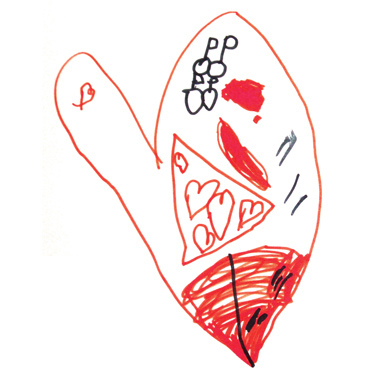‘World’s first sperm race’ to be held in Los Angeles
study asks people to define romantic chemistry in their own terms, leading to 9 unique elements
two women meeting for the first time can judge within minutes whether they have potential to be friends – guided as much by smell as any other sense, according to new Cornell psychology research
researchers discovered that using “a unique sound stimulation technology” — a device that stimulates the inner ear with a specific wavelength of sound — reduces motion sickness. Even a single minute of stimulation reduced the staggering and discomfort felt by people that read in a moving vehicle.
New ChatGPT Models Seem to Leave Watermarks on Text
This meta-analysis finds no empirical support suggesting that GenAI has surpassed humans in creative idea generation
Saying “Please” and “Thank You” to ChatGPT Is Wasting Millions of Dollars in Computing Power
OpenAI buys Windsurf for $3 billion […] a startup that’s been around for 2 years, with its current branding for about 5 months. […] Compared to Cursor, Windsurf has fewer users, has been around for less time, has less brand recognition, and has diminishing prospects for future growth. It’s not as tied to VSCode, which is a plus, I guess. But it all begs the question: why on earth is OpenAI paying so much? […] It’s true that OpenAI managed to get $40bn committed, and it’s also true that this is the largest amount of capital ever raised by a privately held company. But they’re going against Google […] In that light, the decision to spend 3 out of 40 of those billions is even harder to rationalize. Even worse, it’s not yet clear OpenAI actually has $40bn to spend — so far they’ve only got $10bn actually lined up.
Growth is Getting Harder to Find, Not Ideas
Movies are handmade, and just like any other art form, sometimes the seams that hold movies together become visible to the audience.
Pope Benedict IX (c. 1012 – c. 1056) was the bishop of Rome and ruler of the Papal States for three periods between October 1032 and July 1048. Aged about 20 when first elected, he is the youngest pope in history. He is the only person to have been Pope more than once and the only person ever accused of selling the papacy. […] “It seemed as if a demon from hell, in the disguise of a priest, occupied the chair of Peter” […] In October 1032, Benedict’s father obtained his election through bribery. However, his reputedly dissolute activities provoked a revolt on the part of the Romans. Benedict was driven out of Rome and Sylvester III elected to succeed him. Some months later, Benedict and his supporters managed to expel Sylvester. […] [W]ishing to marry his cousin, Benedict then decided to resign in May 1045. He offered to give up the papacy into the hands of his godfather if he would reimburse him for his election expenses. John Gratian paid him the money and was recognized as pope […] Benedict IX soon regretted his resignation and returned to Rome, taking the city and remaining on the throne until July 1046, although Gregory VI continued to be recognized as the true pope. […] A German, Clement II, was chosen to succeed Gregory VI. When Clement II died in October 1047, Benedict seized the Lateran Palace in November, again becoming pope, but was driven away by German troops in July 1048. To fill the power vacuum, the German-born Damasus II was elected pope and universally recognized as such.
List of sexually active popes
Increasingly large discs (usually circular, and made from clay or wood) are inserted into a pierced hole in either the upper or lower lip, or both, thereby stretching it. Archaeological evidence indicates that lip plates have been invented multiple times including in Africa (Sudan and Ethiopia; 5500–6000 BCE) Mesoamerica (1500 BCE), and coastal Ecuador (500 BCE).
The lip plate, or debhinya, is arguably the most recognizable feature of Mursi culture. Women of the tribe begin the process around the age of 15, when their lower lips are pierced and gradually stretched to accommodate a clay or wooden plate.
Mursi women are famous for the wooden and clay lip-plates with which they decorate their lower lips, yet, to the informed and uninformed observer, the specific layers of meanings and kinds of information that they communicate are poorly understood. Building from initial observations and conversations during my first phase of field research among the Mursi, between May and August 2004, I will begin by discussing why most Mursi women adorn themselves with lip-plates, and what it is about the objects themselves that appear to hold such significance for the Mursi.
Mursi rarely paint for aesthetic reasons. Aesthetic body painting is only practiced by older boys, seeking to attract the attention of the girls and of one another. Generally, the Mursi paint for pragmatic and medicinal reasons, rather than for purely aesthetic reasons.
The Surma people use razors or branches with thorns for body scarring, then rubbing ash on it so it becomes raised. On a female they are signs of beauty and identity. The Suri Tribe and Mursi Tribe think hair is dirty so both males and females keep their hair very short. They use razors to create patterns and shapes in their hair styles.







